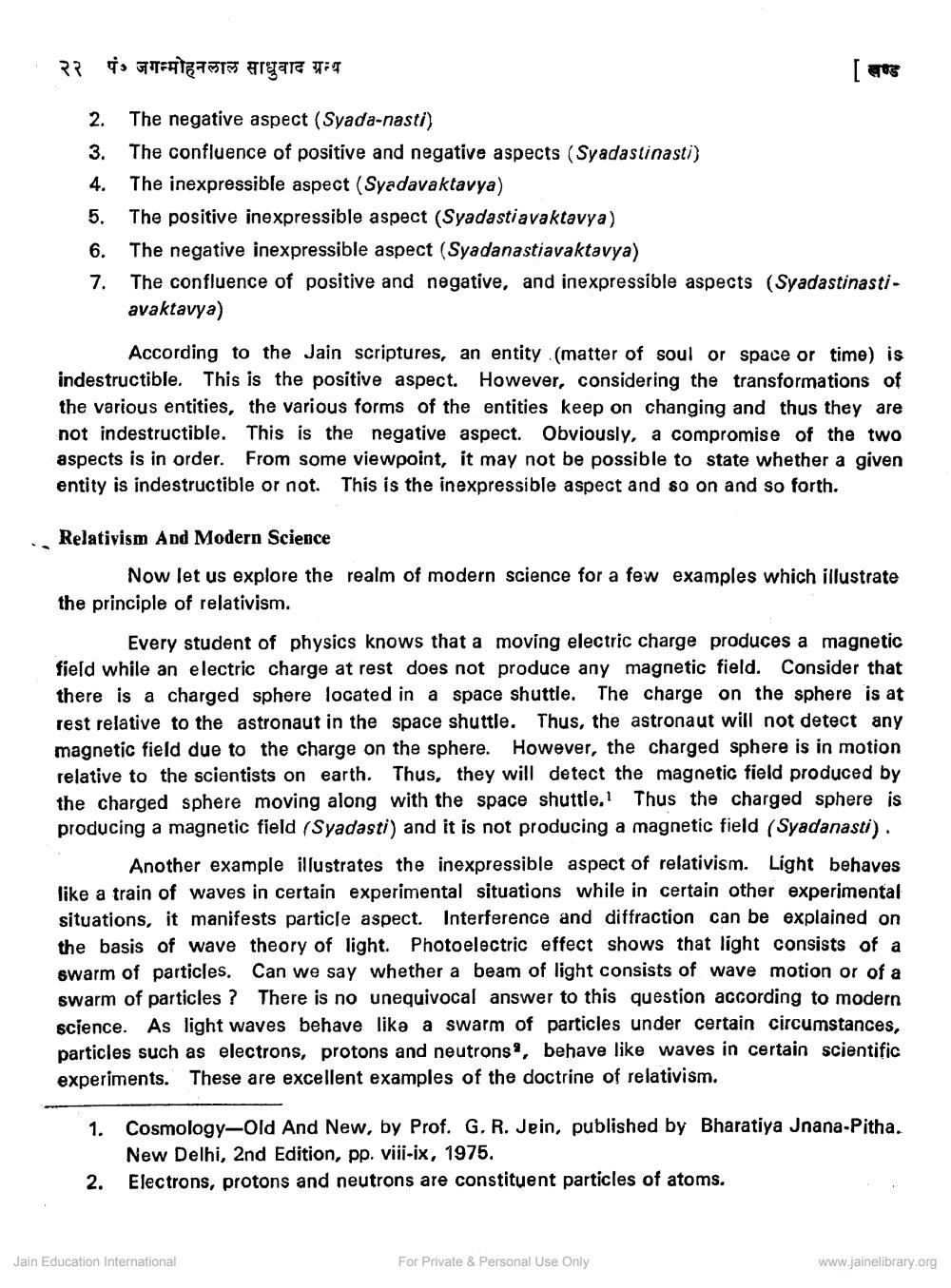________________
. २२ पं. जगन्मोहनलाल साधुवाद ग्रन्थ
2. 3. 4. 5. 6. 7.
The negative aspect (Syada-nasti) The confluence of positive and negative aspects (Syadastinasti) The inexpressible aspect (Syadavaktavya) The positive inexpressible aspect (Syadasti avaktavya) The negative inexpressible aspect (Syadanastiavaktavya) The confluence of positive and negative, and inexpressible aspects (Syadastinastiavaktavya)
According to the Jain scriptures, an entity (matter of soul or space or time) is indestructible. This is the positive aspect. However, considering the transformations of the various entities, the various forms of the entities keep on changing and thus they are not indestructible. This is the negative aspect. Obviously, a compromise of the two aspects is in order. From some viewpoint, it may not be possible to state whether a given entity is indestructible or not. This is the inexpressible aspect and so on and so forth.
Relativism And Modern Science
Now let us explore the realm of modern science for a few examples which illustrate the principle of relativism.
Every student of physics knows that a moving electric charge produces a magnetic field while an electric charge at rest does not produce any magnetic field. Consider that there is a charged sphere located in a space shuttle. The charge on the sphere is at rest relative to the astronaut in the space shuttle. Thus, the astronaut will not detect any magnetic field due to the charge on the sphere. However, the charged sphere is in motion relative to the scientists on earth. Thus, they will detect the magnetic field produced by the charged sphere moving along with the space shuttle. Thus the charged sphere is producing a magnetic field (Syadasti) and it is not producing a magnetic field (Syadanasti).
Another example illustrates the inexpressible aspect of relativism. Light behaves like a train of waves in certain experimental situations while in certain other experimental situations, it manifests particle aspect. Interference and diffraction can be explained on the basis of wave theory of light. Photoelectric effect shows that light consists of a swarm of particles. Can we say whether a beam of light consists of wave motion or of a swarm of particles? There is no unequivocal answer to this question according to modern science. As light waves behave like a swarm of particles under certain circumstances, particles such as electrons, protons and neutrons, behave like waves in certain scientific experiments. These are excellent examples of the doctrine of relativism.
1. Cosmology-Old And New, by Prof. G. R. Jein, published by Bharatiya Jnana-Pitha.
New Delhi, 2nd Edition, pp. viii-ix, 1975. 2. Electrons, protons and neutrons are constituent particles of atoms.
Jain Education International
For Private & Personal Use Only
www.jainelibrary.org




